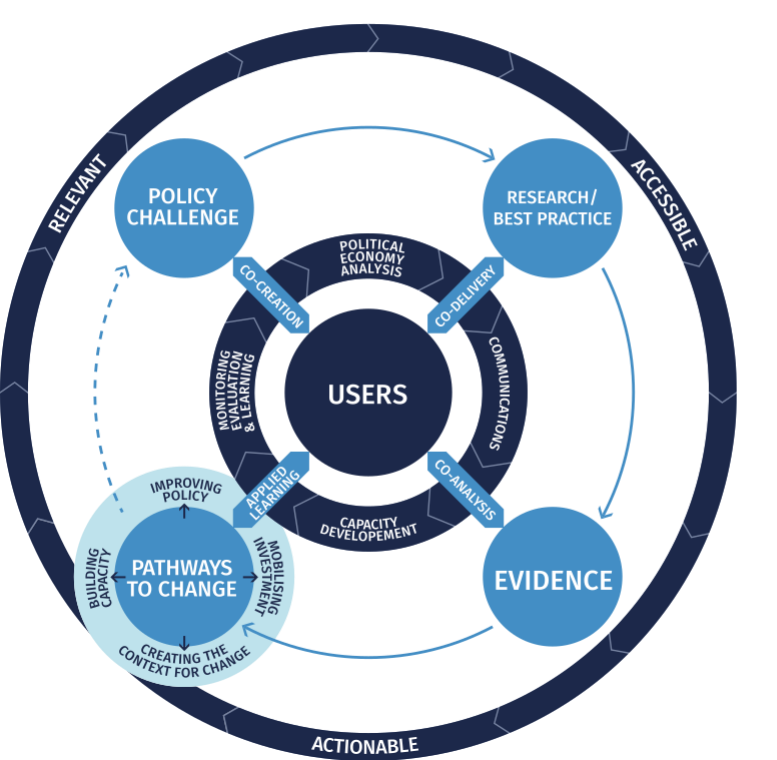
EEG has developed a Policy Research into Action Cycle (PRActiCle) that keeps the end-user of the research – in this case those making decisions on energy policy – the focal point throughout. The circular approach puts activities such as policy engagement, capacity development, and communications on an equal footing with the research process itself to deliver research that is relevant (responds to user demand), accessible (can be easily engaged with) and actionable (provides practical insights for public and private sector stakeholders).
The ultimate objective is to build a body of evidence around how sector reforms, innovative technologies and practicable actions can be used to help maximise the economic impacts of energy infrastructure investments in Sub-Saharan Africa and South Asia.
Implementation of PRActiCle is based on the following key principles:
-
An inclusive approach to stakeholder engagement and co-delivery
-
A strong understanding of the political economy
-
Building capacity among researchers and research users
-
The use of appropriate communication methods and media
-
Creating linkages with existing best practices and other research processes
-
The use of robust monitoring, evaluation and learning (MEL) approaches to assess influence and outcomes.
EEG identifies four transformational pathways through which the effectiveness of PRActiCle can be assessed. These form the basis for the programme to measure user-centred research projects and are: i) improving policy; ii) mobilising investment; iii) creating the context for change: and iv) building capacity.
By supporting these transformational pathways, EEG research can help influence and improve downstream energy sector outcomes (environmental, social, economic, and technical). Although it is unlikely that significant changes will be measurable within the lifetime of research processes, or fully attributable to EEG projects, nonetheless, EEG projects will frame their objectives in terms of their potential contribution to these challenges.
Through this innovative demand-led research and delivery approach, EEG aims to promote the use of evidence in policy decisions, and ultimately, help bring the benefits of modern energy services to poorer people.
The EEG Research Uptake Approach outlines PRActiCle in detail, summarising best practices that inform the research approach, synthesising these insights into a framework, and looking at the practical implications of applying the approach to EEG’s programming.

